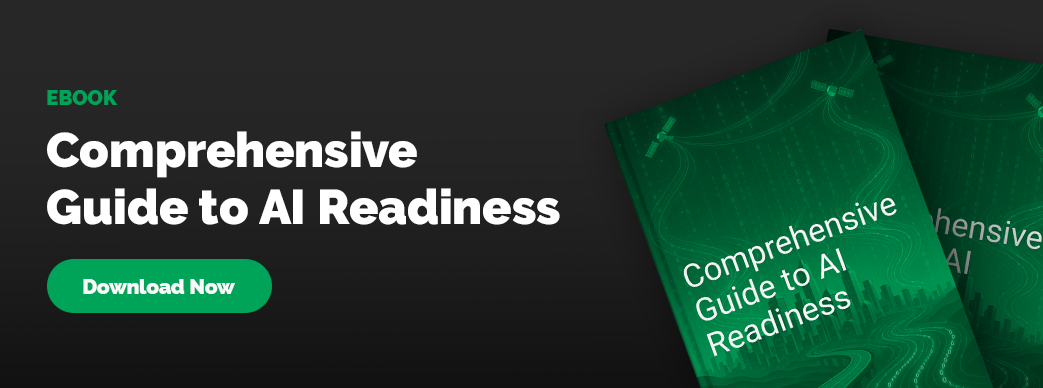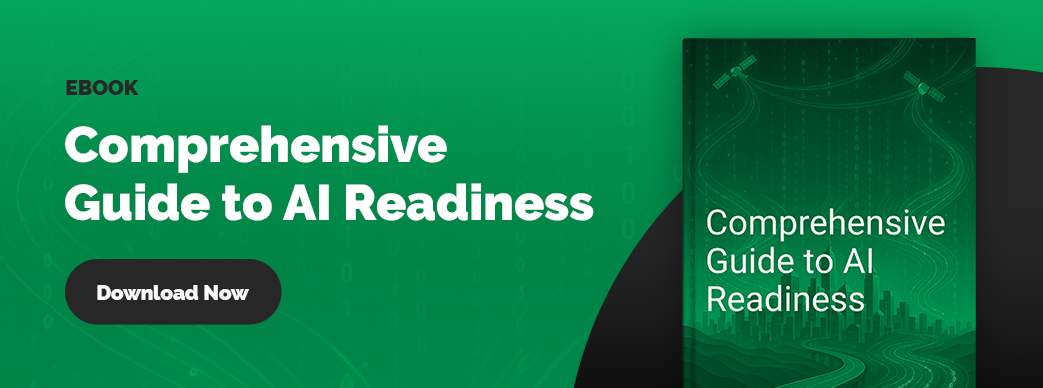Explainable AI Tools: Solving Transparency, Trust, and Compliance Challenges in AI
As artificial intelligence (AI) continues to transform industries, from healthcare to finance to autonomous systems, its complexity often creates a barrier to trust and adoption. Many AI models, particularly advanced ones like deep neural networks, operate as “black boxes,” delivering results without clear insight into how decisions are made. This opacity raises concerns about trust, fairness, compliance, and accountability. Enter Explainable AI tools (XAI) — a set of methods and frameworks designed to make AI decision-making transparent, interpretable, and trustworthy.
What is Explainable AI (XAI)?
Explainable AI refers to a collection of processes, methods, and algorithms that enable humans to understand and trust the decisions made by AI models. Unlike traditional AI, which may produce accurate but opaque outputs, XAI tools provide insights into the reasoning behind predictions or decisions. This transparency is vital in scenarios where understanding the “why” behind an AI’s output is as important as the output itself.
XAI tools address the “black box” problem by offering interpretable explanations, visualizations, or simplified models that clarify how inputs lead to specific outputs. These tools are designed to balance high performance with explainability, ensuring that AI systems remain accurate while being accessible to non-technical stakeholders, such as business leaders, regulators, or end users.
Why XAI Matters
The rise of complex AI models, such as deep learning systems, has amplified the need for explainability. Without clear explanations, organizations face several risks:
- Lack of Trust: End users, from doctors to financial analysts, may hesitate to rely on AI systems they don’t understand.
- Regulatory Non-Compliance: Industries like healthcare and finance are subject to strict regulations (e.g., GDPR) that require transparency in automated decision-making.
- Bias and Unfairness: Opaque models may perpetuate biases, leading to unethical or discriminatory outcomes.
- Error Detection Challenges: Debugging complex models without insight into their logic is time-consuming and costly.
- Limited Adoption: Stakeholders may reject AI solutions if they cannot verify their reliability or fairness.
XAI tools tackle these challenges by providing clarity, fostering trust, and enabling organizations to deploy AI responsibly.
 Key Problems Solved by XAI Tools
Key Problems Solved by XAI Tools
XAI tools address a range of challenges that arise when deploying AI systems in real-world applications. Below, we explore the primary problems these tools solve, along with their practical implications.
- Enhancing Trust Through Transparency
Problem: Many AI models, particularly black-box systems like neural networks, produce outputs that are difficult to interpret. This lack of transparency erodes trust among users, who may question the reliability or fairness of AI-driven decisions.
How XAI Tools Solve It: XAI tools provide clear, human-readable explanations of how models arrive at specific outputs. For example, they can highlight which input features (e.g., age, income, or medical history) most influenced a decision, such as a loan approval or medical diagnosis. These explanations are often presented through visualizations, such as heatmaps or feature importance charts, making them accessible to non-technical users.
Applications:
- Healthcare: Doctors can trust AI diagnostic tools that explain why a particular condition was flagged, ensuring alignment with clinical reasoning.
- Finance: Loan officers can verify that credit risk models base decisions on relevant factors, building confidence in automated systems.
- Customer Service: Chatbots powered by XAI can explain why certain recommendations were made, improving user satisfaction.
By fostering transparency, XAI tools bridge the gap between complex algorithms and human understanding, encouraging broader adoption.
- Ensuring Regulatory Compliance
Problem: Regulations like the General Data Protection Regulation (GDPR) in Europe and the Fair Credit Reporting Act in the U.S. mandate that automated decisions be explainable and auditable. Opaque AI models risk non-compliance, exposing organizations to legal and financial penalties.
How XAI Tools Solve It: XAI tools generate detailed logs and explanations that document the decision-making process. For instance, they can trace how specific inputs contributed to an output, ensuring that decisions are justifiable and free from prohibited factors, such as race or gender. These tools also support auditing by providing clear records for regulators to review.
Applications:
- Banking: XAI tools ensure that loan denial decisions are transparent and compliant with anti-discrimination laws.
- Healthcare: AI systems used for patient triage can demonstrate compliance with privacy and ethical standards.
- Marketing: Personalized recommendation systems can prove they avoid using sensitive personal data, adhering to data protection laws.
By aligning AI with regulatory requirements, XAI tools mitigate legal risks and enable organizations to operate confidently in regulated environments.
- Identifying and Mitigating Bias
Problem: AI models can inadvertently learn biases from training data, leading to unfair or discriminatory outcomes. For example, a hiring algorithm might prioritize male candidates if trained on biased historical data, perpetuating gender disparities.
How XAI Tools Solve It: XAI tools analyze model behavior to identify biased decision patterns. They can highlight which features disproportionately influence outcomes, allowing data scientists to adjust models or datasets to reduce bias. Techniques like fairness metrics and counterfactual explanations help assess whether decisions unfairly favor certain groups.
Applications:
- Human Resources: XAI tools ensure that AI-driven recruitment systems evaluate candidates based on merit, not biased proxies like zip codes or names.
- Criminal Justice: Predictive policing models can be audited to prevent disproportionate targeting of specific communities.
- Insurance: Pricing models can be adjusted to avoid unfair penalties based on irrelevant factors.
By exposing and addressing biases, XAI tools promote fairness and ethical AI deployment.
- Facilitating Error Detection and Debugging
Problem: When complex AI models fail or produce unexpected results, identifying the root cause is challenging without insight into their internal workings. This can delay fixes and erode confidence in AI systems.
How XAI Tools Solve It: XAI tools provide granular insights into model behavior, pinpointing where errors occur. For example, they can reveal if a model relies on irrelevant features or misinterprets data, enabling developers to refine algorithms or retrain models. Visualization techniques, such as heatmaps for image-based models, highlight problematic areas in decision-making.
Applications:
- Autonomous Vehicles: XAI tools can explain why a self-driving car misclassified an object, aiding engineers in improving perception systems.
- Manufacturing: Predictive maintenance models can be debugged to ensure accurate identification of equipment failures.
- Retail: Recommendation systems can be refined to avoid irrelevant or erroneous suggestions.
By simplifying error detection, XAI tools accelerate model improvement and enhance reliability.
- Improving Model Performance and Continuous Learning
Problem: Opaque models make it difficult to identify opportunities for performance optimization. Without understanding how a model processes data, organizations may miss chances to enhance accuracy or efficiency.
How XAI Tools Solve It: XAI tools reveal which features drive model predictions, allowing data scientists to prioritize high-impact variables and eliminate redundant ones. They also support continuous learning by monitoring model behavior over time, detecting issues like data drift (when input data changes significantly) and recommending updates.
Applications:
- E-Commerce: XAI tools optimize recommendation engines by identifying which customer behaviors most influence purchases.
- Energy: Predictive models for energy consumption can be fine-tuned to focus on critical factors like weather patterns.
- Logistics: Route optimization systems can be improved by understanding which variables affect delivery efficiency.
By providing actionable insights, XAI tools enhance model performance and adaptability.
- Enabling User-Centric Decision-Making
Problem: End users, such as business managers or clinicians, often lack the technical expertise to interpret AI outputs. This disconnect limits their ability to act on AI recommendations effectively.
How XAI Tools Solve It: XAI tools translate complex model outputs into intuitive explanations tailored to specific user needs. For example, they can provide natural language summaries or interactive dashboards that allow users to explore decision rationales. This empowers non-technical stakeholders to make informed decisions based on AI insights.
Applications:
- Marketing: Campaign managers can understand why certain customer segments were targeted, enabling better strategy adjustments.
- Education: AI tutoring systems can explain why specific learning paths were recommended, helping educators tailor instruction.
- Supply Chain: Managers can assess why certain suppliers were prioritized, improving procurement decisions.
By making AI accessible, XAI tools bridge the gap between technical systems and human decision-makers.
- Supporting Ethical AI Development
Problem: The ethical implications of AI, such as unintended societal impacts or violations of human values, are difficult to assess without transparency into model behavior.
How XAI Tools Solve It: XAI tools provide frameworks for evaluating models against ethical principles, such as fairness, accountability, and transparency. They enable organizations to audit decisions, ensure alignment with societal values, and engage stakeholders in discussions about AI’s role.
Applications:
- Public Policy: AI systems for resource allocation can be evaluated to ensure equitable distribution.
- Social Media: Content moderation algorithms can be audited to balance free speech and safety.
- Nonprofits: AI tools for donor outreach can be designed to respect privacy and ethical boundaries.
By embedding ethical considerations into AI development, XAI tools promote responsible innovation.
Types of XAI Tools and Their Approaches
XAI tools employ various techniques to achieve explainability, each suited to different use cases and model types. Below, we outline the main categories and their problem-solving capabilities.
- Feature Importance Analysis
What It Does: Identifies which input features (e.g., age, location, or purchase history) most influence a model’s predictions.
Problems Solved:
- Highlights key drivers of decisions, improving trust and interpretability.
- Detects biases by revealing if irrelevant or sensitive features dominate.
- Optimizes models by focusing on high-impact variables.
Example Use Case: In a credit scoring model, feature importance analysis might show that income and credit history are the primary factors, reassuring users that decisions are fair and relevant.
- Local Explanations
What It Does: Explains why a model made a specific decision for an individual input, often using simplified surrogate models or counterfactuals.
Problems Solved:
- Provides case-specific transparency, enhancing user trust.
- Supports compliance by documenting individual decision rationales.
- Aids debugging by pinpointing errors in specific predictions.
Example Use Case: In a medical diagnosis system, a local explanation might clarify why a patient was flagged for a condition based on their symptoms and test results.
- Global Explanations
What It Does: Describes the overall behavior of a model across all inputs, revealing general trends and patterns.
Problems Solved:
- Educates stakeholders about model logic, fostering trust.
- Identifies systemic biases or weaknesses in model design.
- Supports strategic decision-making by clarifying model priorities.
Example Use Case: In a customer churn prediction model, a global explanation might reveal that recent purchase frequency is the strongest predictor, guiding retention strategies.
- Visualization Techniques
What It Does: Uses graphs, heatmaps, or interactive dashboards to present model behavior visually.
Problems Solved:
- Makes complex models accessible to non-technical users.
- Highlights errors or biases through intuitive displays.
- Enhances communication of AI insights to stakeholders.
Example Use Case: In an image recognition system, a heatmap might show which parts of an image influenced a classification, aiding in error detection.
- Counterfactual Explanations
What It Does: Shows how inputs would need to change to achieve a different outcome (e.g., “If income increased by $10,000, the loan would be approved”).
Problems Solved:
- Empowers users to understand decision boundaries.
- Supports fairness by revealing how sensitive decisions are to specific factors.
- Encourages actionable insights for improving outcomes.
Example Use Case: In a job application system, a counterfactual explanation might indicate that additional certifications would have led to a different hiring decision.
- Model-Agnostic Methods
What It Does: Applies explainability techniques to any AI model, regardless of its architecture.
Problems Solved:
- Ensures flexibility across diverse AI systems.
- Simplifies adoption in organizations with varied model types.
- Reduces dependency on specific model designs.
Example Use Case: A model-agnostic tool can explain both a neural network and a decision tree used in the same organization, streamlining transparency efforts.
Industry Applications of XAI Tools
XAI tools are transforming industries by addressing sector-specific challenges. Below, we highlight key applications and the problems they solve.
Healthcare
- Challenge: Clinicians need to trust AI diagnostic tools while ensuring patient safety and compliance with regulations.
- Solution: XAI tools explain why specific diagnoses or treatment recommendations were made, aligning with clinical reasoning and regulatory standards.
- Impact: Improves patient outcomes, enhances trust, and ensures ethical AI use.
Finance
- Challenge: Financial institutions must comply with anti-discrimination laws and justify automated decisions.
- Solution: XAI tools provide auditable explanations for loan approvals, credit scoring, or fraud detection, ensuring fairness and compliance.
- Impact: Reduces legal risks, builds customer trust, and optimizes decision-making.
Autonomous Systems
- Challenge: Self-driving cars and robotics require transparent decision-making to ensure safety and public acceptance.
- Solution: XAI tools explain actions like lane changes or obstacle avoidance, aiding debugging and regulatory approval.
- Impact: Accelerates adoption of autonomous technologies and enhances safety.
Human Resources
- Challenge: AI-driven hiring tools risk perpetuating biases, leading to unfair outcomes.
- Solution: XAI tools identify biased features and ensure decisions are merit-based.
- Impact: Promotes diversity, ensures compliance, and improves hiring quality.
Retail and E-Commerce
- Challenge: Recommendation systems must be relevant and trustworthy to drive sales.
- Solution: XAI tools explain why specific products were suggested, enhancing user confidence.
- Impact: Increases customer satisfaction and conversion rates.
Best Practices for Implementing XAI Tools
To maximize the benefits of XAI tools, organizations should follow these best practices:
- Define User Needs: Tailor explanations to the audience, whether technical (data scientists) or non-technical (business leaders, end users).
- Prioritize Interpretability: Choose tools that balance accuracy with explainability, avoiding overly complex explanations.
- Integrate Early: Embed XAI tools in the AI development lifecycle, from data analysis to model deployment.
- Monitor Continuously: Use XAI tools to track model performance and detect issues like data drift or bias over time.
- Educate Stakeholders: Train teams to interpret XAI outputs, fostering trust and effective use.
- Ensure Scalability: Select tools that can handle large datasets and complex models without compromising performance.
- Design Your Network: Consider Network Design for the AI Era to ensure scalability.
Challenges and Future Directions
While XAI tools offer significant benefits, they face challenges that require ongoing research and innovation:
- Complexity vs. Explainability: Highly accurate models are often less interpretable, creating a trade-off that XAI tools must navigate.
- Evaluation Metrics: Standardized metrics for assessing explanation quality are lacking, complicating tool selection.
- User Interpretation: Explanations must be meaningful to diverse users, requiring advances in human-AI interaction.
- Computational Costs: Some XAI methods are resource-intensive, posing challenges for real-time applications.
Looking ahead, the future of XAI lies in developing causal explanation methods, improving user interfaces, and integrating XAI into generative AI systems, such as large language models. As AI continues to evolve, XAI tools will play a pivotal role in ensuring transparency, trust, and ethical deployment.
Conclusion
Explainable AI tools are revolutionizing the way organizations adopt and trust AI systems. By solving critical challenges—such as lack of transparency, regulatory non-compliance, bias, and error detection—these tools empower industries to leverage AI responsibly and effectively. From healthcare to finance to autonomous systems, XAI tools provide the clarity needed to build trust, ensure fairness, and drive innovation.
As businesses navigate the complexities of AI, integrating XAI tools into their workflows is not just a technical necessity but a strategic imperative. By prioritizing transparency and accountability, organizations can unlock the full potential of AI while aligning with ethical and regulatory standards.
XAI tools offer a pathway to smarter, more trustworthy AI solutions that deliver real-world impact. Please don’t hesitate to reach out to us anytime to discuss your AI strategy, XAI tools, and how we can guide you in the right direction.
Related Posts
Recent Posts
- The AI Privacy Engineer: Architecting Trust and Compliance in the Age of AI
- AI in CCaaS RFPs: Essential Features for Next-Gen Contact Centers
- The Future of CCaaS: How AI Will Transform Contact Centers by 2035
- Tier 1 vs Tier 2 vs Tier 3 ISPs Explained: The Complete Guide for IT Leaders
- America’s AI Action Plan 2025: What CEOs, CIOs, and CFOs Need to Know
Archives
- September 2025
- August 2025
- July 2025
- June 2025
- May 2025
- April 2025
- March 2025
- February 2025
- January 2025
- December 2024
- November 2024
- October 2024
- September 2024
- August 2024
- July 2024
- June 2024
- May 2024
- April 2024
- March 2024
- February 2024
- January 2024
- December 2023
- November 2023
- October 2023
- September 2023
- August 2023
- July 2023
- June 2023
- May 2023
- April 2023
- March 2023
- February 2023
- January 2023
- December 2022
- November 2022
- October 2022
- September 2022
- August 2022
- July 2022
- June 2022
- May 2022
- April 2022
- March 2022
- February 2022
- January 2022
- December 2021
- November 2021
- October 2021
- September 2021
- August 2021
- July 2021
- June 2021
- May 2021
- April 2021
- March 2021
- December 2020
- September 2020
- August 2020
- July 2020
- June 2020
Categories
- All (19)
- Satellite (1)
- Artificial Intelligence (8)
- Travel (1)
- Sports (1)
- Music (1)
- News (278)
- Design (3)
- Clients (12)
- Uncategorized (1)
- Tips & tricks (25)
- Inspiration (9)
- Client story (1)
- Unified Communications (196)
- Wide Area Network (309)
- Cloud SaaS (60)
- Security Services (71)





